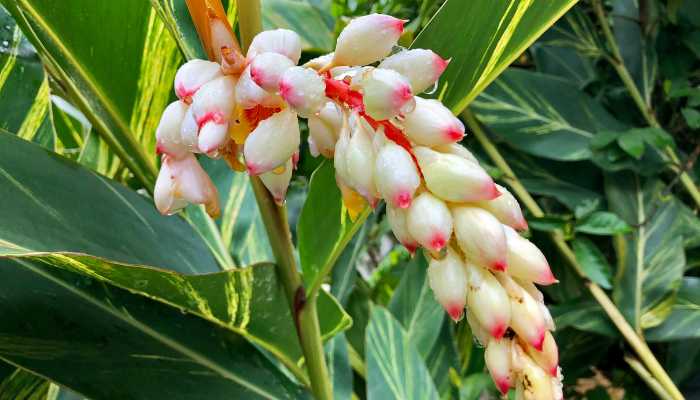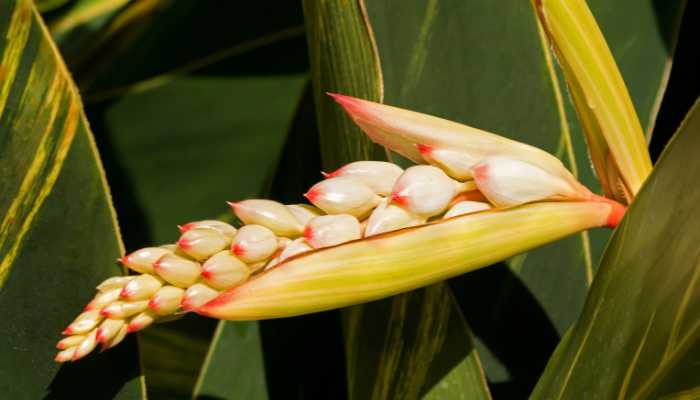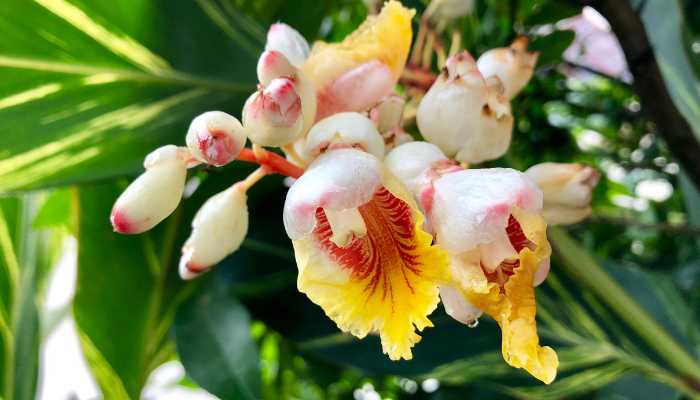Introduction
Welcome to the fascinating world of the diverse ginger plant!
In this comprehensive guide, we’ll tell you everything you need to know about growing and caring for these beautiful plants.
Ginger Variegated Plant Table of Contents
Understanding Ginger Variegated Plants
Ginger variegated plants, also known as variegated shell ginger or Alpinia zerumbet, are prized for their stunning foliage. They feature vibrant green leaves with elegant white stripes, adding a touch of exotic beauty to any garden.
Selecting the Right Plant
When choosing a ginger variegated plant, look for healthy specimens with lush foliage and no signs of pests or diseases. Opt for plants that are well-rooted in their pots for better growth prospects.

Planting Your Ginger Variegated Plant
To plant your ginger variegated plant, select a location with well-draining soil and partial shade. Dig a hole slightly larger than the root ball and gently place the plant, covering the roots with soil.
Soil Requirements
Ginger variegated plants thrive in rich, loamy soil with good drainage. Amend heavy soils with organic matter like compost or peat moss to improve drainage and fertility.
Watering Needs
Keep your ginger variegated plant evenly moist but not waterlogged. Water deeply once or twice a week, depending on the weather and soil moisture levels.
Sunlight and Temperature Requirements
These plants prefer filtered sunlight or partial shade. Protect them from direct afternoon sun, especially in hot climates. They thrive in temperatures between 65°F to 85°F (18°C to 29°C).

Fertilizing Tips
Feed your ginger variegated plant with a balanced fertilizer every 4-6 weeks during the growing season. Avoid over-fertilizing, as it can lead to excessive foliage growth at the expense of flowers.
Pruning and Maintenance
Prune dead or yellowing leaves regularly to promote healthy growth. Remove spent flowers to encourage continuous blooming throughout the season.
Image | Product Name | Review | Price |
Dealing with Common Pests and Diseases
Keep an eye out for pests like aphids or spider mites, especially in warmer months. Treat infestations promptly with insecticidal soap or neem oil. Watch for signs of root rot and adjust watering if necessary.
Harvesting Your Ginger Variegated Plant
Harvest ginger variegated plants when the rhizomes are mature, usually after 10-12 months of growth. Dig carefully to avoid damaging the roots, and harvest only what you need, leaving the rest to continue growing.
Storing and Using Your Harvested Ginger Variegated Plant
Store harvested ginger variegated rhizomes in a cool, dry place. Use them fresh in culinary dishes or dry and grind them for use as a spice or herbal remedy.
Read More
Ginger Variegated Plant Conclusion
Growing and caring for ginger variegated plants is a rewarding experience that adds beauty and flavor to your garden and kitchen. Follow these tips to ensure healthy growth and abundant harvests.
Ginger Variegated Plant FAQs
Can ginger variegated plants tolerate full sun?
While ginger variegated plants prefer partial shade, they can tolerate some morning sun if provided with adequate moisture and protection from intense midday sun.
How often should I fertilize my ginger variegated plant?
Fertilize your ginger variegated plant every 4-6 weeks during the growing season with a balanced fertilizer diluted to half strength.
What are the ideal soil pH requirements for ginger variegated plants?
Ginger variegated plants prefer slightly acidic to neutral soil with a pH range of 6.0 to 7.0 for optimal growth.
Are ginger variegated plants prone to any specific diseases?
These plants are generally resilient but may suffer from root rot if overwatered. Ensure proper drainage and avoid waterlogged conditions to prevent disease.
Can I grow ginger variegated plants indoors?
Yes, you can grow ginger variegated plants indoors in containers with well-draining soil and indirect sunlight. Provide regular moisture and fertilization for best results.





















1 thought on “How to Grow and Care Ginger Variegated Plant”